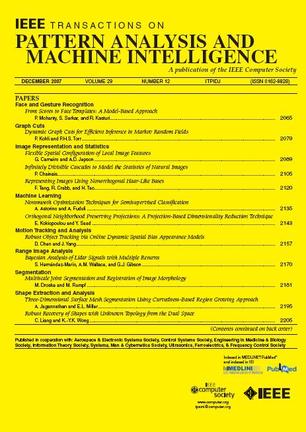DiffusionAD:用于异常检测的范数引导一步去噪扩散。
IF 20.8
1区 计算机科学
Q1 COMPUTER SCIENCE, ARTIFICIAL INTELLIGENCE
IEEE Transactions on Pattern Analysis and Machine Intelligence
Pub Date : 2025-05-15
DOI:10.1109/tpami.2025.3570494
引用次数: 0
摘要
异常检测以其显著的有效性和高效性在实际工业制造中得到了广泛的应用。然而,以前的基于生成的模型受到次优重建质量的限制,阻碍了它们的整体性能。本文介绍了一种新型的异常检测管道DiffusionAD,该管道由一个重建子网和一个分段子网组成。一个基本的改进在于我们使用扩散模型将重建过程重新制定为噪声-规范范式。在这里,异常区域在受到高斯噪声的干扰后失去了其鲜明的特征,随后被重建为无异常区域。然后,分割子网络根据输入图像与其无异常重建图像之间的相似性和差异性预测像素级异常分数。此外,由于扩散模型的迭代去噪特性导致推理速度大幅下降,我们重新审视了去噪过程,并引入了快速的一步去噪范式。这种模式实现了数百倍的加速,同时保持了相当的重建质量。此外,考虑到异常表现的多样性,我们提出了一个规范引导的范式来整合多个噪声尺度的好处,提高重建的保真度。对四个标准和具有挑战性的基准的综合评估表明,DiffusionAD优于目前最先进的方法,并达到了相当的推理速度,证明了拟议管道的有效性和广泛适用性。代码发布在https://github.com/HuiZhang0812/DiffusionAD。本文章由计算机程序翻译,如有差异,请以英文原文为准。
DiffusionAD: Norm-Guided One-Step Denoising Diffusion for Anomaly Detection.
Anomaly detection has garnered extensive applications in real industrial manufacturing due to its remarkable effectiveness and efficiency. However, previous generative-based models have been limited by suboptimal reconstruction quality, hampering their overall performance. We introduce DiffusionAD, a novel anomaly detection pipeline comprising a reconstruction sub-network and a segmentation sub-network. A fundamental enhancement lies in our reformulation of the reconstruction process using a diffusion model into a noise-to-norm paradigm. Here, the anomalous region loses its distinctive features after being disturbed by Gaussian noise and is subsequently reconstructed into an anomaly-free one. Afterward, the segmentation sub-network predicts pixel-level anomaly scores based on the similarities and discrepancies between the input image and its anomaly-free reconstruction. Additionally, given the substantial decrease in inference speed due to the iterative denoising nature of diffusion models, we revisit the denoising process and introduce a rapid one-step denoising paradigm. This paradigm achieves hundreds of times acceleration while preserving comparable reconstruction quality. Furthermore, considering the diversity in the manifestation of anomalies, we propose a norm-guided paradigm to integrate the benefits of multiple noise scales, enhancing the fidelity of reconstructions. Comprehensive evaluations on four standard and challenging benchmarks reveal that DiffusionAD outperforms current state-of-the-art approaches and achieves comparable inference speed, demonstrating the effectiveness and broad applicability of the proposed pipeline. Code is released at https://github.com/HuiZhang0812/DiffusionAD.
求助全文
通过发布文献求助,成功后即可免费获取论文全文。
去求助
来源期刊
CiteScore
28.40
自引率
3.00%
发文量
885
审稿时长
8.5 months
期刊介绍:
The IEEE Transactions on Pattern Analysis and Machine Intelligence publishes articles on all traditional areas of computer vision and image understanding, all traditional areas of pattern analysis and recognition, and selected areas of machine intelligence, with a particular emphasis on machine learning for pattern analysis. Areas such as techniques for visual search, document and handwriting analysis, medical image analysis, video and image sequence analysis, content-based retrieval of image and video, face and gesture recognition and relevant specialized hardware and/or software architectures are also covered.

 求助内容:
求助内容: 应助结果提醒方式:
应助结果提醒方式:


